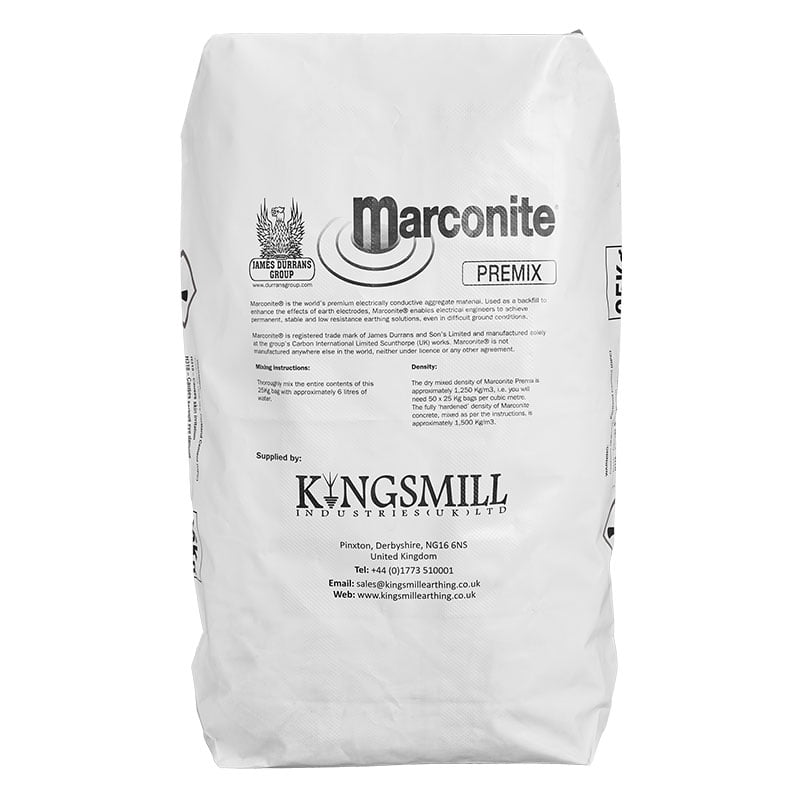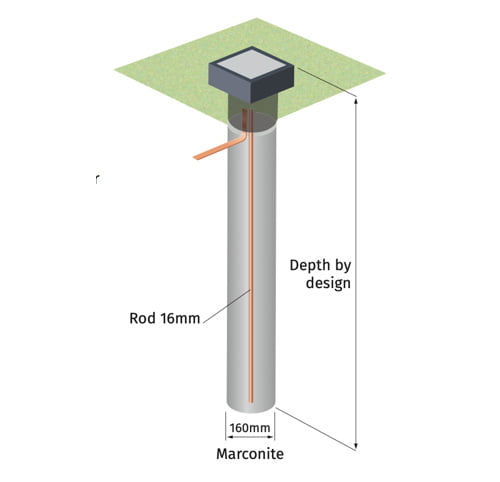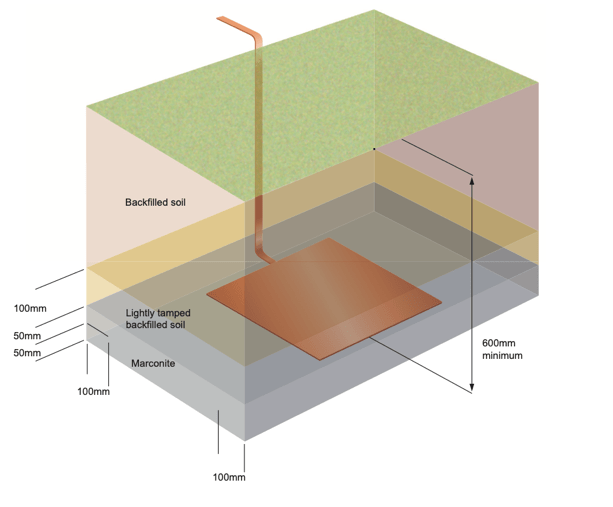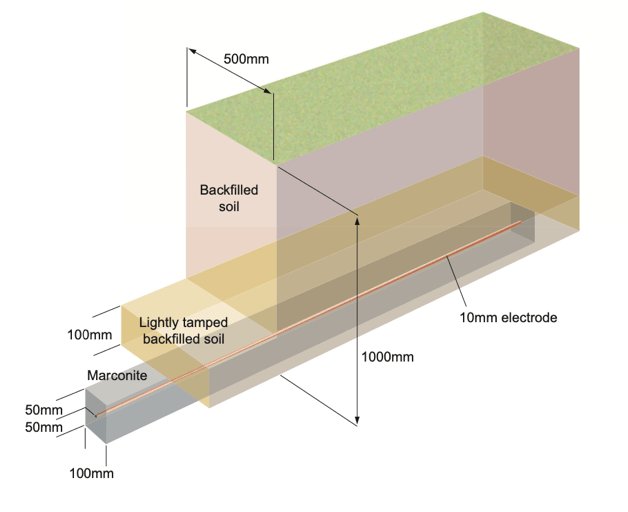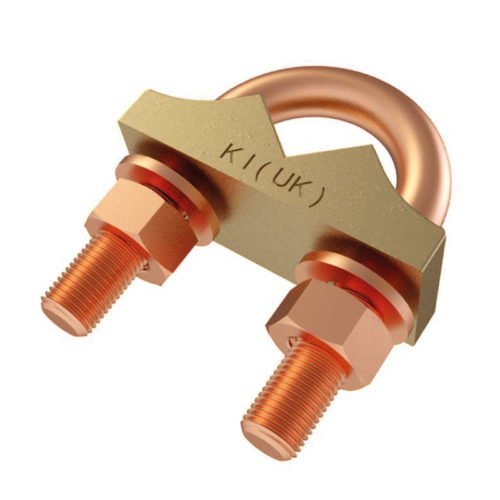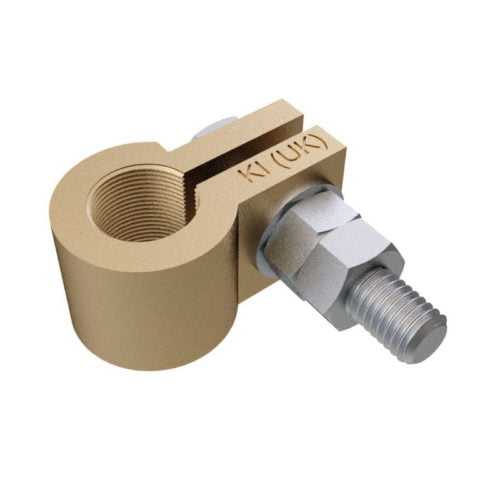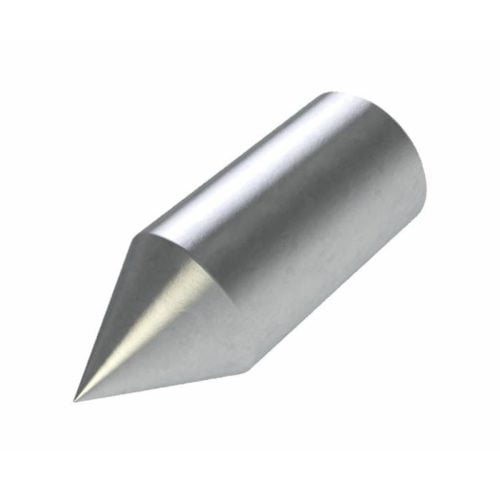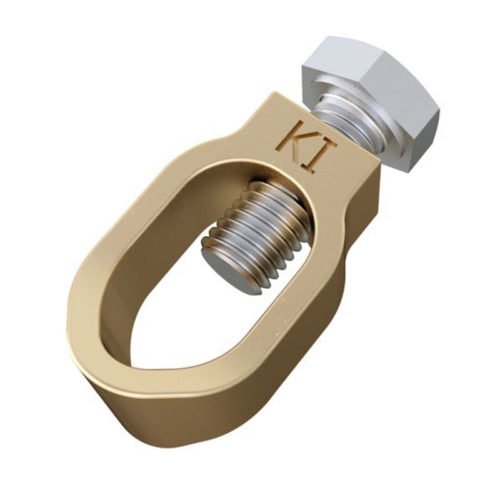Product Information:
Marconite® is a granulated conductive medium designed to replace the conventional aggregate in concrete and thereby provide a permanent medium with good electrical conductivity ,protective earth and high strength.
It can provide a permanent solution to problems in electrical/ constructional situations.
Marconite® concrete is touch dry within hours, but it will be several days before it is fully cured.
Marconite® is chemically inert with very low soluble sulfate content. It can be used with all conventional types of cement, as well as most proprietary resin-based cement, adhesives, and gypsum plasters.
Features:
Marconite® is a granulated conductive medium designed to replace the conventional aggregate in concrete and thereby provide a permanent medium with good electrical conductivity and strength.
- Low resistivity, especially when compared to Bentonite
- Does not rely on moisture to conduct electricity
- No seasonal variation – does not rely on water to conduct, does not shrink
- Does not require maintenance
- Chemically inert and non-polluting – non-corrosive to steel and copper, it does not attack cement structures. Its PH is within the neutral range
- Environmentally safe – it does not dissolve or dissipate like other chemical enhancers such as caustic soda, salt and acid based products
- Easy to use – forms a concrete like material that can be poured as a slurry and in some situations, used dry
- Acts as a theft deterrent
- High strength – can be used as part of the building structure and achieve strengths of grade 25 concrete
- Synthetic material manufactured specifically for earthing applications
More Information:
- a) Marconite® is the ideal solution for use in problem earth situations
In areas of poor soil conductivity (high resistivity) – e.g. rocky areas, sandy soil etc. - b) In conjunction with lattice mats/plates (where the earth electrodes cannot be deep driven)
- c) Where space is limited
MIXING INSTRUCTIONS:
Plain Marconite®:
3:1 mix Marconite®/cement by weight plus 1 litre of water per 4kg. (ie 3 x 25kg bags of Marconite®, 1 x 25kg bag of cement, 6 litres of water.)
It is possible to vary the ordinary portland cement and water content to suit local conditions, but this will affect the performance of the finished concrete.
Marconite® Premix:
Cement and Marconite® have already been mixed, simply add 6 liters of water per 25kg bag of Marconite® Premix.
When mixed as above, relatively dry material is formed. Water content can be adjusted as the application requires, but this will affect drying times and resultant compressive strength. Typically, the mix is touch dry within hours but not fully cured until after several days.
Density:
- Pure dry Marconite® (Marconite-01) is approximately 1,000kg/m3 (40 x 25kg bag per one cubic metre)
- Dry Marconite® pre-mix (Marconite-02) is approximately 1,250kg/m3 (50 x 25kg bags per one cubic metre)
- The fully hardened density of Marconite® concrete, mixed as per instructions, is 1,500kg/m3
We recommend plain Marconite for export markets.
More Information:
For installing lightning earthing system applications, We recommend the use of Copper earth electrode systems due to their inherent low resistivity and corrosion resistance.
Materials used in earthing systems must be able to:
- withstand mechanical damage,
- resist corrosion,
- provide a low impedance path to earth,
- and carry the maximum fault condition for the application/installation.
For protective earth networks and lightning protection applications our range encompasses:
Copper earth rod, earthing pole, copper bonded ground rod, earth ground rod, earth rod connector, earth rod cover, earth fitting, earthing studs, ground clamps for ground rod, ground pole and grounding post.
Our castings are high quality/high copper content complying to BS 7430 and BS 62561-1. Additional to our range are UL listed copperbond earth rods and exothermic welding.

